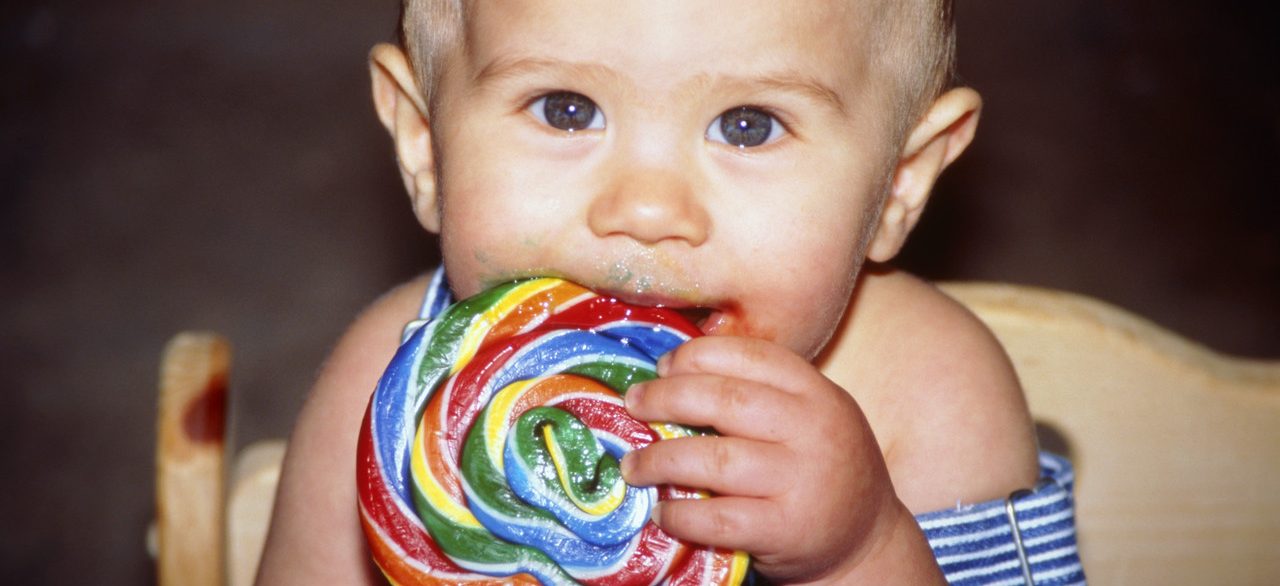Most Kids Can’t Tell the Taste of Sugar

But sugar is likely to make them gain more fat.
If your child insists he only likes soda with sugar, try pouring a drink with an artificial sweetener into a pitcher. A large double-blinded randomized controlled trial, the gold standard in science on humans, suggests that most kids won’t know the difference.
We hear all the time that we eat too much sugar, but it’s still hard to get a grip on the craziness of the American diet. Consider this: 1 tablespoon of ketchup contains a teaspoon of various kinds of sugars and a can of sweetened soda about eight. The American Heart Association (AHA) recommends that teenagers stick to a daily 5 to 8 teaspoons. One full soda and a hamburger with ketchup would put a kid over the top — for the whole day. What are the chances that kid will have another soda at dinner, and ice-cream for dessert?
American children and adolescents get some 16 percent of the daily calories from sugars added to processed food and drink, with male teens topping the chart. A 2015 World Health Organization (WHO) guideline recommends a daily intake of “free sugars” of less than 10 percent — and ideally, 5 percent — of total calories. “Free sugars” include table sugar; fructose in honey, syrups, fruit juice, and fruit concentrates; and sugars added to processed food and drinks, often high-fructose corn syrup.
The WHO and AHA guidelines are based in part on data that kids who consume more sugary drinks are more likely to be overweight or obese.
Could you kids be happy with a less caloric drink? Some Dutch research suggests yes. In public schools near Amsterdam, the researchers recruited more than 640 children between 4 and 12 years old who were of normal weight. At the time they drank about one sugar-sweetened beverage in the classroom during the 10 a.m. break each school day, on average, and one and a half daily on the weekends. That may not sound like much — children in the United States consume almost three times as many calories in sugar-sweetened beverages, the researchers noted.
The team hired a Dutch beverage manufacturer to develop two noncarbonated beverages in 8-oz. bottles. The drinks looked and tasted essentially the same except one contained 104 calories of sugar and the other, which was sweetened with sucralose, had zero calories. The children received a box at school each week labeled with their name that contained 8 cans, one for each day of the week plus one extra to be used as a spare in case a can was misplaced. The teachers checked to see whether the children consumed their beverage during the morning break in class and reminded them to take cans home for the weekend and any holidays.
After 18 months, when researchers asked the kids still in the study whether they thought they’d been drinking a drink with sugar or an artificial sweetener, half said they didn’t know. Among those who had an opinion, only a third to a quarter got the answer right. Somewhat more guessed correctly in the artificially-sweetened group than we could expect by chance — and slightly fewer were correct in the sugar group. About a quarter of the kids dropped out, mostly because they didn’t like the drink, and yes, this answer was more common if they had been drinking artificial sweetener. However, they were a small minority. Your kids’ taste buds may not be as good as he thinks they are.
The bottom line: Both groups of kids gained weight as one would expect at that age. However, children in the sugar-free group gained 35 to 19 percent less fat over the 18 months, depending upon how fat was measured.
Artificial sweeteners aren’t a reliable way to diet, as the researchers point out. However, it’s very clear that getting sugar out of the routine is a good idea. Move your kids over to water or an unsweetened drink instead.
Updated:
February 27, 2020
Reviewed By:
Janet O’Dell, RN